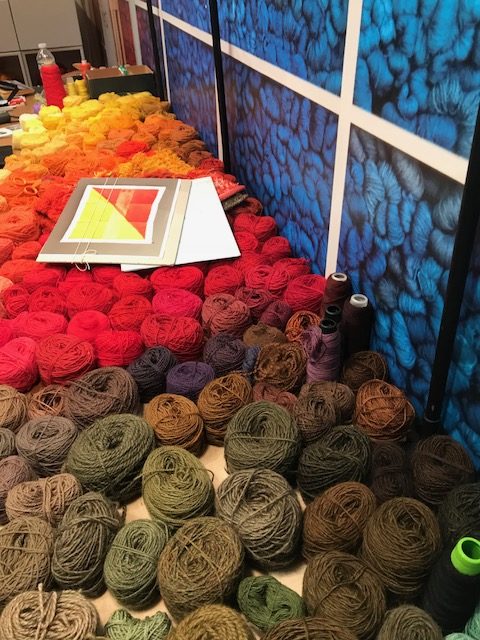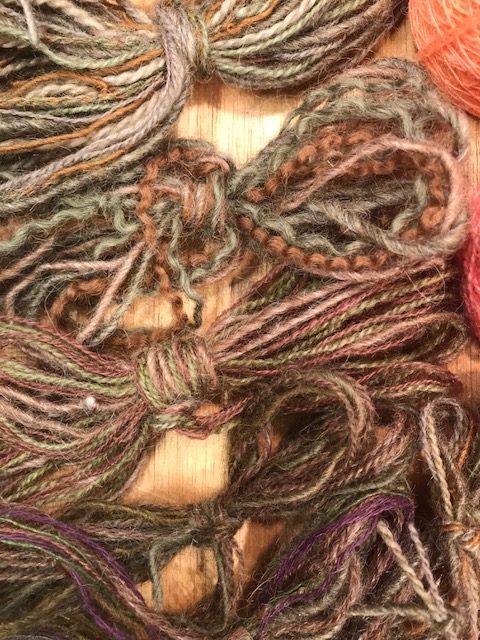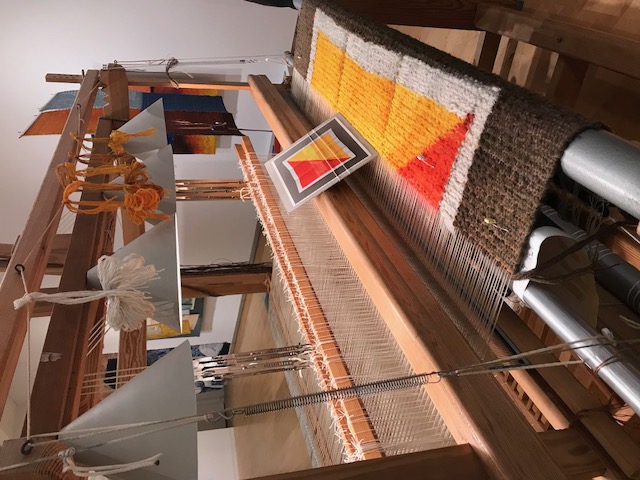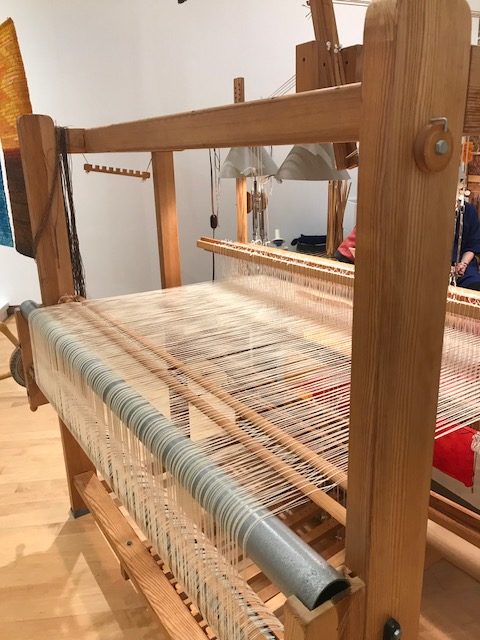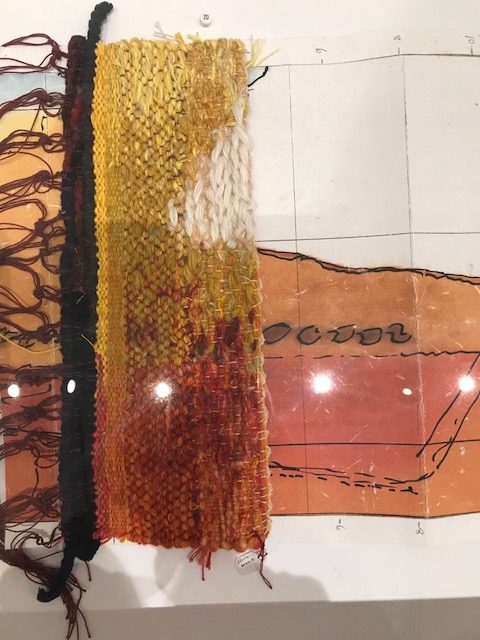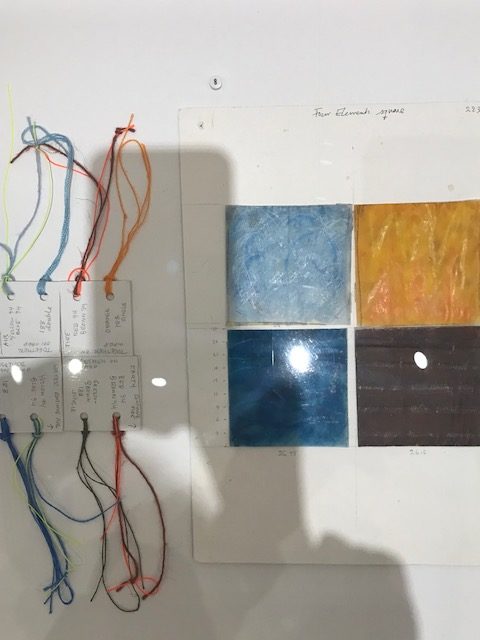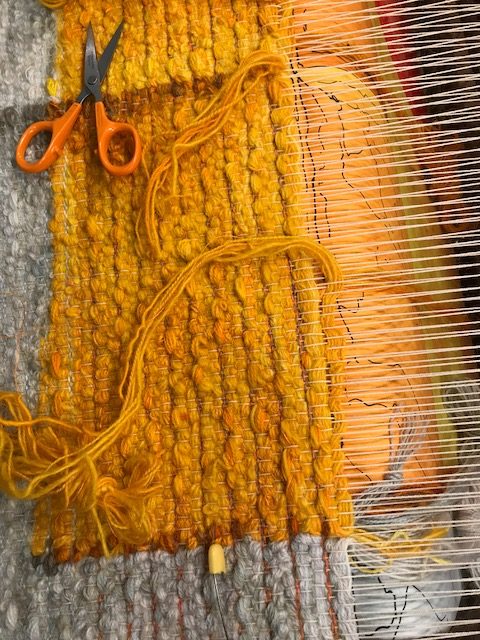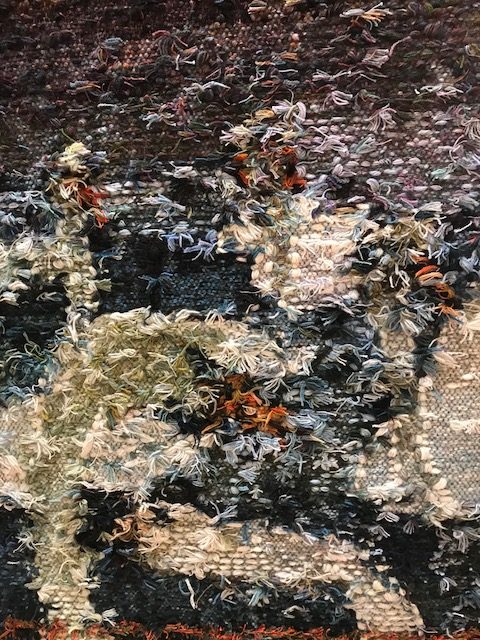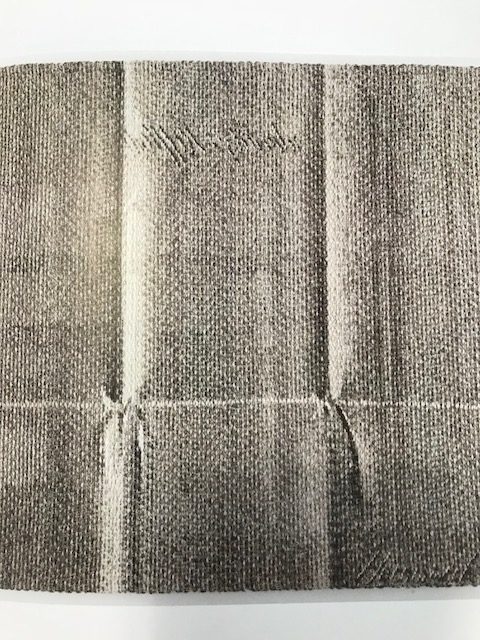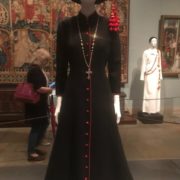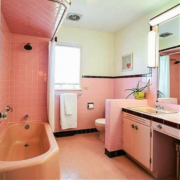A serendipitous visit to The Aldrich Museum of Contemporary Art in Ridgefield, CT (encouraged by a friend who is a volunteer in the education department there) reminded me that wonderful exhibitions can hide in plain sight — in this case, practically in my backyard.
What awaited me: a transplanted version of the artist Helen Hernmarck’s weaving studio, including an image of her spectacular wool wall. The wall consists of 99 cubicles, nine down and eleven across, filled with thousands of skeins of single- and double-ply yarn spun from the outer wool of Swedish Rya sheep. The skeins span the full chromatic spectrum, with the darker skeins at the bottom and lighter ones at the top. This is Hernmarck’s palette, as broad and rich as that of any artist in any medium.
The demonstration loom is a 5′ Glimakra Countermarch: a traditional, hand-operated floor loom that is the artist’s second largest. To create her “pictures” in wool, she starts with a “cartoon” or watercolor drawing, which helps guide the placement and color choices for the finished piece. (Hernmarck is not only a remarkable weaver but also a fluent watercolor artist.) The body of her work at the Aldrich has never been shown publicly before; many of the pieces remain in the artist’s personal collection.
I find the complexity of weaving similar to that of creating and assembling mosaics. Each technique is time-consuming and performed with painstaking attention to detail. (It often takes Hernmarck an hour to weave one square inch). While one method involves soft materials and the other hard, both require unique skill and artistry in equal measure. At the same time, both use natural materials and blended colors to achieve fluent and sophisticated designs. Whether a woven textile or an extraordinary mosaic, each type of composition prompts you to ask: Is it art or craft?

